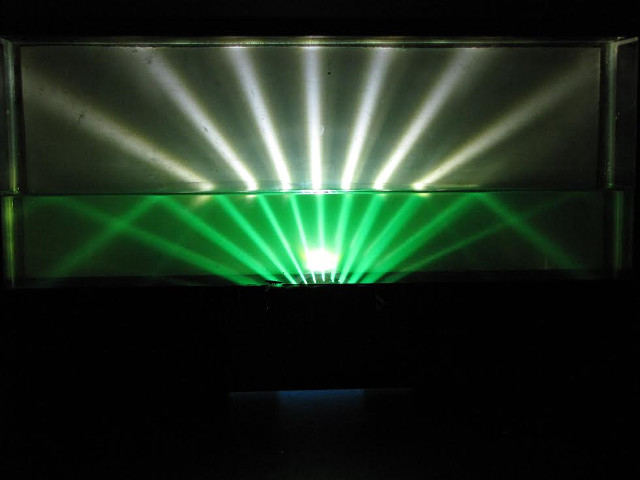Demos: 7A-23 Total Internal Reflection

An aquarium is fitted with a cylindrical window at the bottom, over which a slotted cover is placed. A cylindrical bulb placed beneath the window thus generates several beams of light, each striking the water surface at a different angle. Refraction, partial reflection and total internal reflections are clearly visible.
Directions: Fill the tank 3/4 full with water containing a fluorescene dye (this will be prepared ahead of time by the lec-demo technician). Dim the room lights, turn on the aquarium lamp. The lamp can be rotated slightly to make adjustments of the beams. A white card placed behind the aquarium aids in the visibility.
Suggestions for Presentation: This is a situation in which the light originates in a higher index of refraction liquid and passes into a lower index. This allows for a critical angle to be reached which results in total internal reflection. But prior to reaching this angle, point out that the refracted ray is accompanied by a reflected ray which obeys the Law of Reflection. You might want to use this effect to point out that reflections occur when there is a change in the index of refraction. This is why lenses have to be coated to reduce these reflections. (The subject of coatings is in the physical optics section, so you might wish to defer discussion of the topic until later.)
Applications: Views of the outside world from the bottom of a swimming pool, i.e. a confined “circle” of view. Also prisms used in cameras and binoculars exhibit total internal reflection. (See 7A - 22.)
Last Updated: Nov 30, 2023 11:25 AM